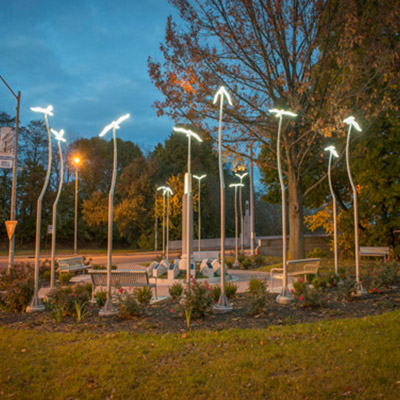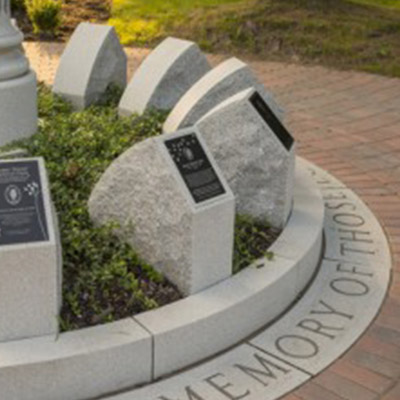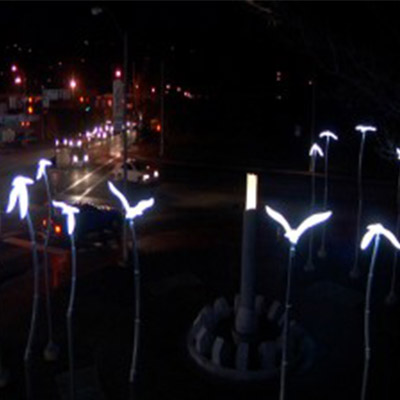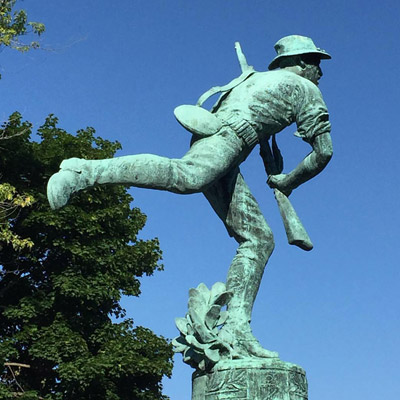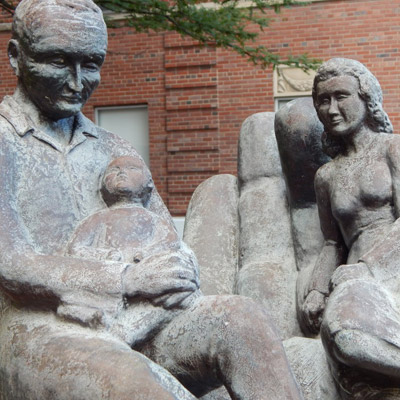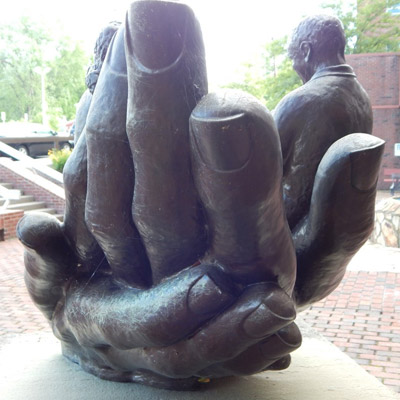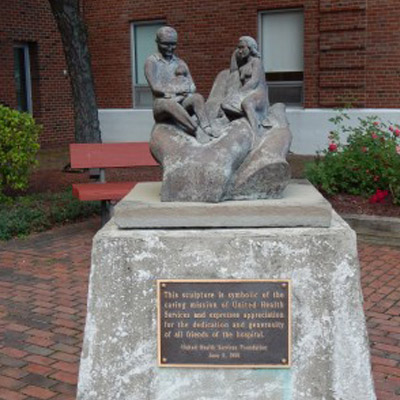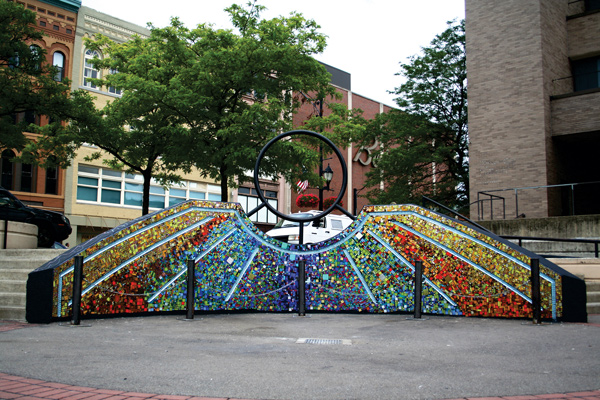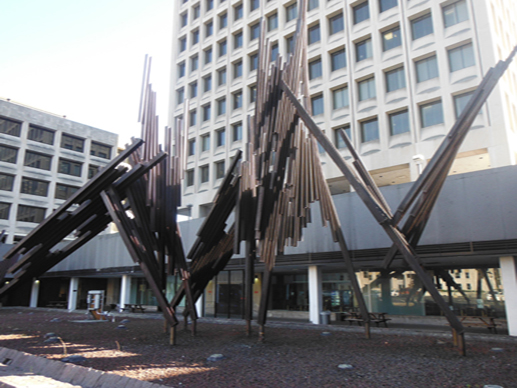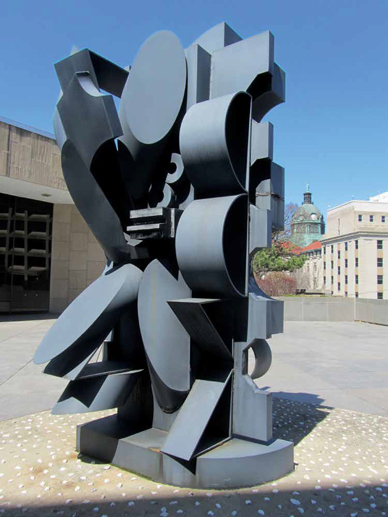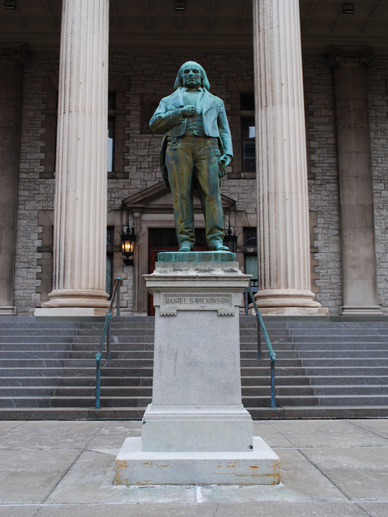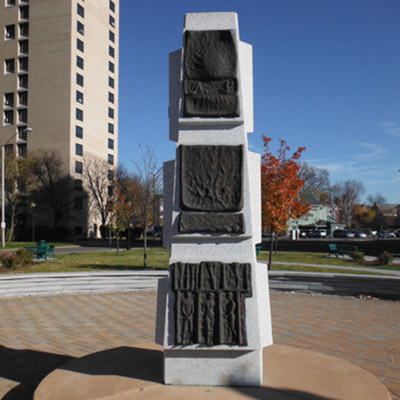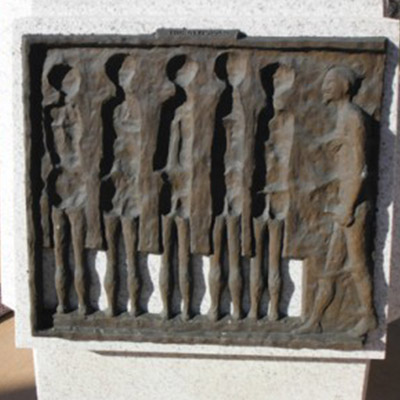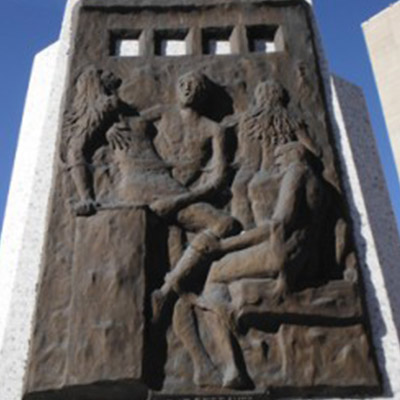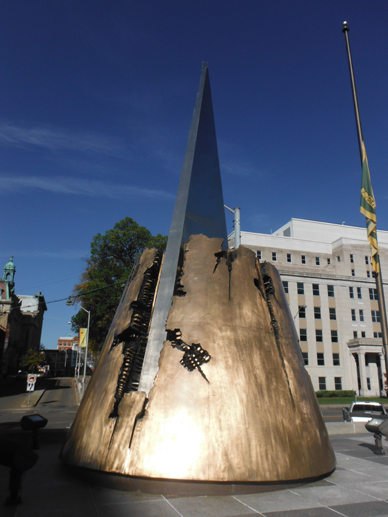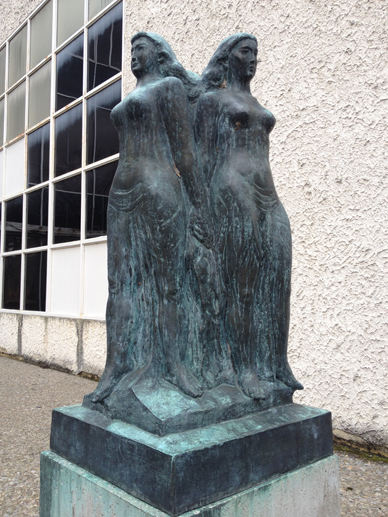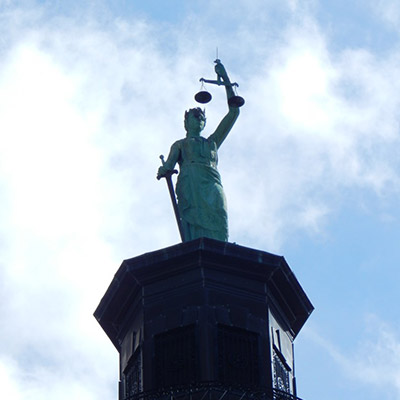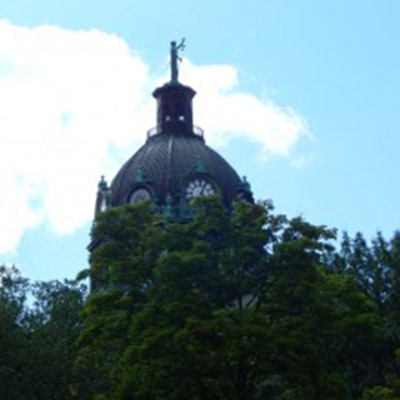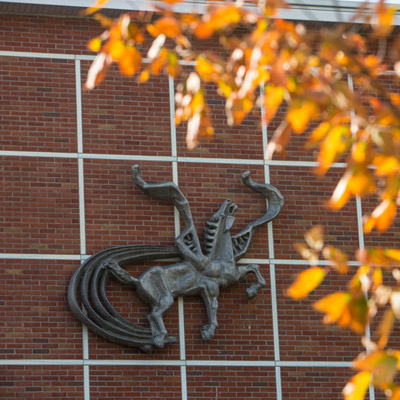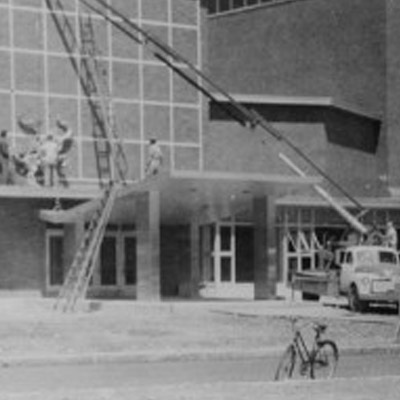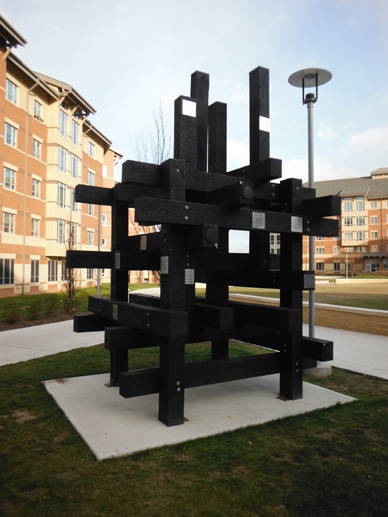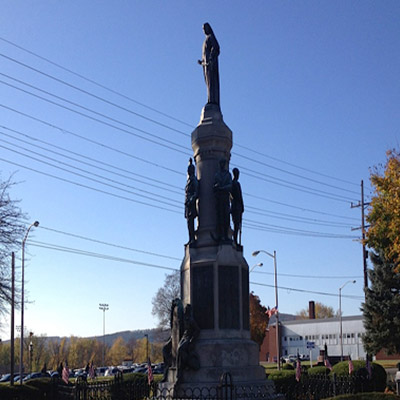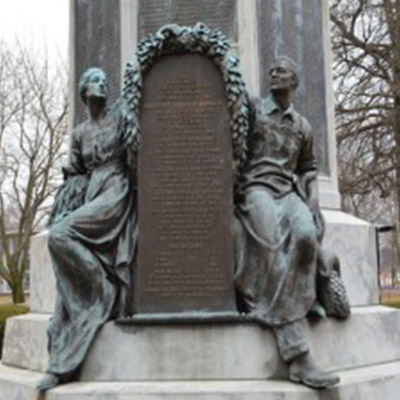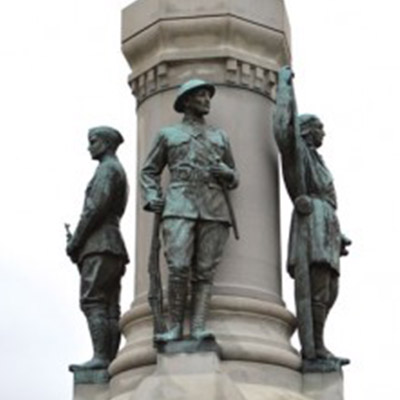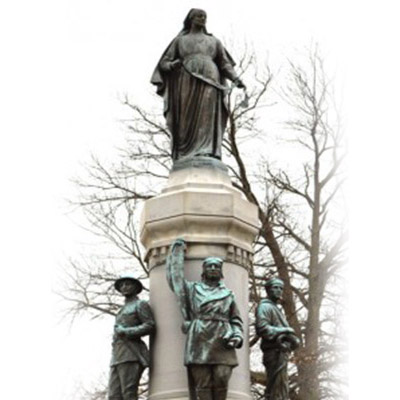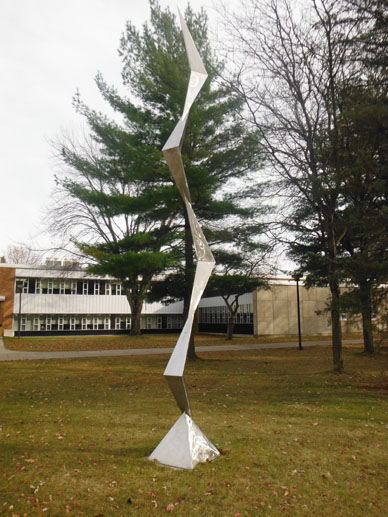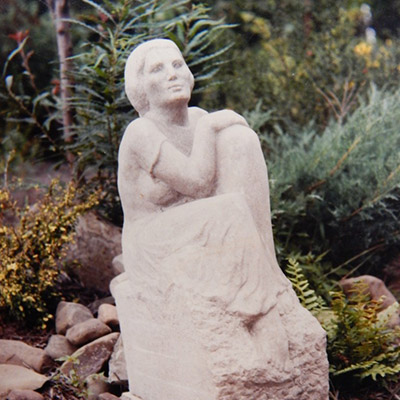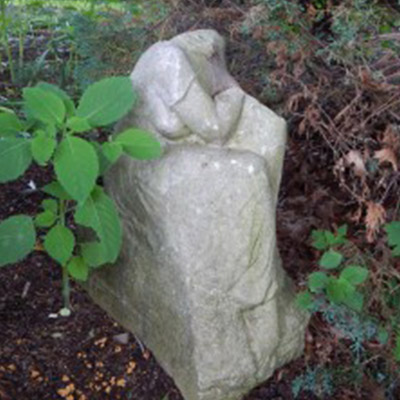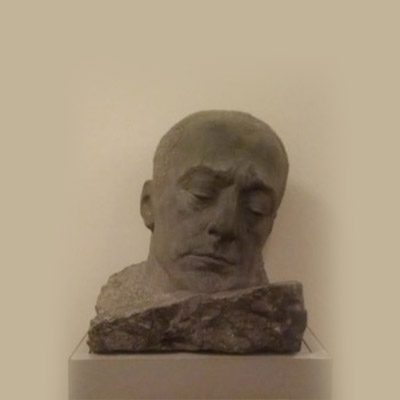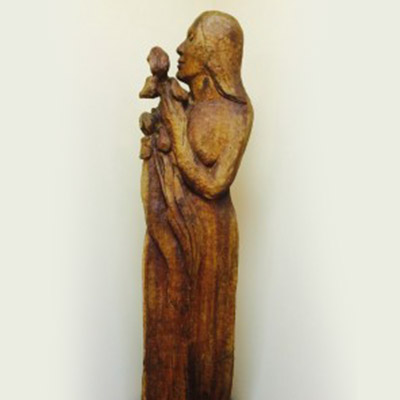Reviewed by Lee Shepherd
Bravo to the “Bolshitzky Ballet” for its marvelous parody of classical ballet Tuesday evening (April 2) at Binghamton University’s Anderson Center for the Arts.
But looking beyond the tongue-in-cheek satire of classical ballet by the all-male cast dressed in tutus, tights and toe shoes, Les Ballets Trockadero de Monte Carlo is a troupe of very fine and skilled dancers. With long, slim and elegant legs, coiffed in wigs and lots of makeup, they were given away by a hairy chest on one prima ballerina and hefty shoulders muscles on another.
I was expecting slapstick and broad comedy – what I got was humor; little bits of nonsense that punctuated the performance and were all the funnier for not pervading the entire evening.
Of course, there were the comedy clichés: the black swan shoving the white swan off stage in a fit of limelight-hogging jealousy … a wandering spotlight finding no dancer on stage … the extended curtain call by a diva and the hook that removed her … infinite trouble with tutus … and references to Gangnam-style and other incongruous types of dance thrown into the mix. There were pratfalls and facial mugging and a drag on an oxygen tank after a particularly difficult pas de deux – you get the idea.
But all that aside, and in between the fol-de-rol, they executed the choreography of the classic Russian ballet with precision and prowess. For long moments, you’d forget this was a group of male dancers, and see only a finely synchronized corps de ballet.
On a personal note, I thought of the premise of the troupe as revenge on the male sex for every little girl (like myself) forced to dance in painful toe shoes. On another personal note, my cellist husband will never again play Saint-Saens’ Le Cygne without seeing a dying swan molting feathers all over the stage.
Les Ballets Trockadero de Monte Carlo, or the Trocks as the troupe is affectionately known, was formed in 1974 by a group of ballet enthusiasts for the purpose of presenting a playful, entertaining parody of classical ballet. Since then, the men have traveled worldwide and established themselves as a major global dance phenomenon. Company biographies show they hail from Italy, France, South Africa, Cuba, Colombia, Spain and the United States and have trained at the some of the most prestigious dance schools around the globe.
But you have to hunt for their real names in the program. The more prominent “Meet the Artists” section presents: Nadia Doumiafeyva, Lariska Dumbchenko, Nina Immobilashvili, Natalie Kleptopovska, Marina Plezegetovstageskaya and other “notables” of the Russian ballet scene.
The accompanying biographies are a hoot – Moussia Shebarkarova, for example, was “a celebrated child prodigy back in the Brezhnev era, (who) astounded her parents at the age of two by taking a correspondence course in ballet. Sadly, due to the unreliable Russian postal system, she has only just graduated.”
The program itself is an item to treasure, along with the memory of a wonderful evening at the ballet.


